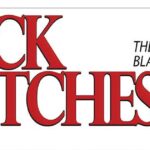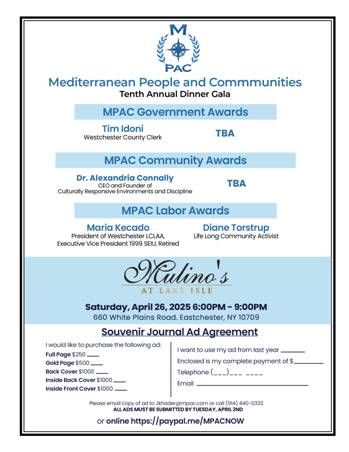While Bill Clinton and Barack Obama were in office, black Americans consistently backed Democratic presidents. Obama’s election, which broke the nation’s highest racial barrier, and Clinton’s election, referred to as “the first black president” due to their cultural resonance and perceived empathy, represent progress and equality. While these policies had noble intentions, they failed to address systemic inequities and exacerbated racial disparities.
Clinton Era Policies that Deepened Inequity
A Crime Bill was passed in 1994
Although Black leaders initially supported his 1994 Crime Bill to combat urban violence, it remains a contentious legacy.As part of the legislation, harsher punishments, such as longer prison sentences, were implemented for drug-related offenses, and local law enforcement funding was increased. Black African Americans were also disproportionately incarcerated as a result of the bill. As a result of mandatory minimum sentencing and “three strikes” laws, the bill disproportionately affected African-American men, contributing to mass incarceration and family instability. Initially, many Black leaders viewed the bill as a way to address urban crime rates, which were devastating their communities. Increasing law enforcement and toughening sentencing would restore safety and stability to neighborhoods plagued by violence and drug use.
These policies, however, quickly became apparent as they disproportionately targeted Black individuals, leading to widespread disillusionment and criticism. As a result of the pipeline to prison, poverty, and systemic disadvantage continue to exist. Mandatory minimum sentences and “three strikes” laws must be reduced for fair sentencing practices. In addition, investing in community-based programs aimed at preventing, educating, and rehabilitating criminals can help reintegrate them back into society. As a final point, improving police accountability and prioritizing restorative justice initiatives can help rebuild trust between police and marginalized communities. In restorative justice, healing and reconciliation take precedence over punishment. It is a chance for offenders to apologize to victims and work towards making amends for their actions. Reducing recidivism rates by fostering understanding and personal growth can create a safer, more cohesive community.
Accord on NAFTA
He advocated for NAFTA in 1993 and remains integral to Clinton’s economic legacy. Even though the agreement promised economic growth, Black communities have lost essential manufacturing jobs as a result. NAFTA has had a long-term effect on community development, particularly in Black communities. The loss of jobs has contributed to economic decline, reduced local investment, and a lack of quality education and healthcare. This has resulted in many communities failing to create sustainable economic opportunities, which worsens poverty cycles and hinders overall development. Middle-class stability has been eroded as automotive manufacturing positions have been outsourced. If alternative trade policies are implemented, trade agreements like NAFTA can negatively impact local jobs and fair labor practices.
By encouraging domestic manufacturing and investing in workforce development programs, industries can be revived, creating new jobs. It is also possible to set strong environmental and labor standards in trade agreements to ensure that marginalized communities are not harmed in economic growth. Despite lower consumer prices resulting from NAFTA, it had a profound effect on Black families’ financial well-being, which illustrates how global monetary policy plays a role in livelihoods at the local level. Local economies have suffered as once-thriving industries shuttered or relocated, leaving workers unemployed and communities with diminished tax bases due to outsourcing.
Economic Recovery and Education: Missed Opportunities Under Obama’s Presidency
Generations to come: Educating the young
The Obama administration viewed higher education as a pillar of social mobility. The local government could offer tax incentives and grants to companies willing to invest in these affected communities to attract new businesses. Businesses may also be more inclined to locate in these areas if infrastructure improvements, such as transportation and internet service, are made. By developing specialized training programs tailored to the needs of new industries, educational institutions can also create a skilled workforce, further enticing businesses to establish operations in these areas. In addition to failing to address structural barriers, the vision overlooked the importance of vocational training and skilled trades. The one-size-fits-all approach has led to many Black Americans not pursuing a college education.
Financial crisis of 2008: reactions
Due to the 2008 financial crisis, these limitations became more apparent. Black homeowners who were the victims of predatory lending practices did not benefit from the TARP bailouts since the program provided massive bailouts to banks. There was a 40% decline in Black homeownership rates as a result of the foreclosure crisis. Nearly $1 trillion in Black wealth was lost as a result of the foreclosure crisis. Targeted financial assistance can be implemented for first-time homebuyers to support Black homeownership recovery. Affordability of mortgages and financial literacy education can also assist individuals in making informed decisions about homeownership. Regulations to prevent predatory lending will also protect Black communities from future exploitation. Inadequate and poorly implemented homeowner assistance programs exacerbated economic disparities.
The policies of both presidents contributed to the growing divide between African-American communities. The number of college-educated professionals has increased, while those without degrees have had fewer economic opportunities. Despite making up 13% of the population, black business ownership remains stagnant at just 2.4%. Individual successes—such as Black athletes, entertainers, and executives—tend to obscure the community’s economic challenges.
It is a testament to the power of symbolic victories and representation that Clinton and Obama remain popular among Black voters. However, increasing Black support for candidates like Donald Trump indicates dissatisfaction with symbolic advancements.
Democrat policymakers’ focus on higher education highlighted a critical blind spot. It is often unintended consequences that result from extending college access. The student loan debt burden was disproportionately heavy on black students, compounded by persistent racial wage gaps. College promises of economic stability often lead to generational wealth gaps. In addition to traditional higher education, vocational training offers a valuable alternative. Individuals gain practical skills and hands-on experience applicable to in-demand jobs, making them economically independent. Communities can ensure a more inclusive workforce and reduce barriers to financial stability by prioritizing vocational education.
Further compounding the problem was the administration’s neglect of vocational training as a viable alternative. Plumbing and electrical work are skilled trades that offer reliable routes to middle-class security, often with earnings exceeding those of college graduates. However, this pathway has often been overlooked, resulting in the financial instability of Black Americans.
The lessons from Clinton’s and Obama’s presidencies are clear: representation is crucial but cannot replace policies that address systemic inequity and promote widespread opportunity. To achieve real progress, Black communities must move beyond symbolic victories to implement strategies encouraging upliftment. By focusing on substantive reforms and broad-based economic progress, we can lay the groundwork for a more equitable and inclusive future.
Here is a comprehensive list of references and sources that support the content of the op-ed:
Bank Bailouts and TARP
- Amount Allocated to Banks:
- Troubled Asset Relief Program (TARP) reports by the U.S. Department of the Treasury.
- Congressional Budget Office (CBO) analysis of TARP expenditures and repayments.
- Bank Bailouts:
- Reports from The Atlantic and The New York Times on how TARP favored Wall Street over struggling homeowners.
- Analysis from the Center for Responsible Lending on the disproportionate impact of the financial crisis on Black homeowners.
Foreclosure Crisis and Black Homeownership
- Decline in Black Homeownership:
- U.S. Census Bureau data on homeownership rates by race (2004–2016).
- Pew Research Center analysis of the foreclosure crisis and its impact on minority communities.
- Loss of Black Real Estate Wealth:
- Center for Responsible Lending reports on predatory lending practices targeting Black homeowners.
- Urban Institute studies on wealth loss and foreclosure rates among Black families.
- Predatory Lending Practices:
- Studies by the National Community Reinvestment Coalition and the Federal Reserve Bank of Chicago on the targeting of subprime loans to Black borrowers.
- Widening Racial Wealth Gap:
- Brookings Institution reports on wealth disparities exacerbated by the Great Recession.
- Federal Reserve data showing the median wealth of Black vs. White households post-recession.
Obama Administration Policies
- Home Affordable Modification Program (HAMP) and Home Affordable Refinance Program (HARP):
- U.S. Department of Housing and Urban Development (HUD) assessments of HAMP and HARP effectiveness.
- Critiques from the National Consumer Law Center on the limitations of these programs.
- Neglect of Targeted Relief:
- Reports from the Economic Policy Institute and the Brennan Center for Justice on the lack of direct support for Black communities during the recovery.
Systemic Inequities and Economic Impact
- Loss of Wealth in Black Communities:
- Analysis by the Institute for Policy Studies on the $1 trillion wealth loss in Black communities during the Great Recession.
- Reports by the NAACP on the long-term effects of the foreclosure crisis on Black neighborhoods.
- Structural Inequalities in Housing:
- Historical studies from the Harvard Joint Center for Housing Studies on redlining and systemic barriers to homeownership for Black Americans.
Political and Social Perceptions
- Criticism of the Obama Administration:
- Articles from Politico and The Washington Post examining disillusionment among Black voters regarding the administration’s handling of the foreclosure crisis.
- Pew Research Center analysis of Black voter turnout trends during the Obama years.
- Impact of the Great Recession on Public Trust:
- Gallup polls and studies on public trust in government during the recession, with a focus on racial disparities in perceptions of fairness.
- The Role of Predatory Lending in Black Wealth Loss:
- Reports from the Center for Responsible Lending and the National Fair Housing Alliance on how predatory lending practices disproportionately affected Black communities.
!











[…] Keep reading to see other criticisms of these two popular presidents. […]